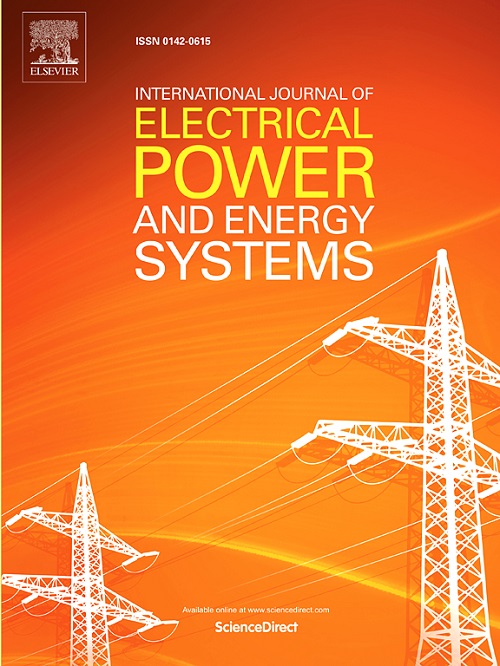A supercapacitor size minimization and energy management strategy for E-STATCOM connected to weak grid
IF 5
2区 工程技术
Q1 ENGINEERING, ELECTRICAL & ELECTRONIC
International Journal of Electrical Power & Energy Systems
Pub Date : 2025-09-27
DOI:10.1016/j.ijepes.2025.111174
引用次数: 0
Abstract
Recently, the rapid integration of renewable energy sources has been reducing power system inertia, which threatens frequency stability. To address this issue, E-STATCOMs with supercapacitor-based energy storage have emerged as a persuasive solution, providing synthetic inertia in weak grids. This paper proposes a novel control methodology to minimize the size of supercapacitors for E-STATCOMs. Firstly, the embedded droop characteristics of virtual synchronous generator (VSG) control are quantitatively analyzed and eliminated, allowing the supercapacitor to store only the necessary energy. Additionally, the proposed supercapacitor energy management strategy tightly couples the stored energy with the VSG control. This enables the automatic management of supercapacitor energy while providing adequate inertial response. A small-signal stability analysis is also performed to ensure the stability of the system when the proposed control strategy is applied. Experimental results verify the effectiveness of the proposed method under various scenarios.
弱电网E-STATCOM超级电容器尺寸最小化及能量管理策略
近年来,可再生能源的快速并网降低了电力系统的惯性,从而威胁到频率的稳定。为了解决这个问题,基于超级电容器的储能E-STATCOMs作为一种有说服力的解决方案出现了,它可以在弱电网中提供合成惯性。本文提出了一种新的控制方法来最小化e - statcom的超级电容器尺寸。首先,定量分析和消除了虚拟同步发电机(VSG)控制的嵌入式下垂特性,使超级电容器只存储必要的能量。此外,所提出的超级电容器能量管理策略将存储的能量与VSG控制紧密耦合。这使得超级电容器能量的自动管理,同时提供足够的惯性响应。为了保证系统在应用所提出的控制策略时的稳定性,还进行了小信号稳定性分析。实验结果验证了该方法在各种场景下的有效性。
本文章由计算机程序翻译,如有差异,请以英文原文为准。
求助全文
约1分钟内获得全文
求助全文
来源期刊
CiteScore
12.10
自引率
17.30%
发文量
1022
审稿时长
51 days
期刊介绍:
The journal covers theoretical developments in electrical power and energy systems and their applications. The coverage embraces: generation and network planning; reliability; long and short term operation; expert systems; neural networks; object oriented systems; system control centres; database and information systems; stock and parameter estimation; system security and adequacy; network theory, modelling and computation; small and large system dynamics; dynamic model identification; on-line control including load and switching control; protection; distribution systems; energy economics; impact of non-conventional systems; and man-machine interfaces.
As well as original research papers, the journal publishes short contributions, book reviews and conference reports. All papers are peer-reviewed by at least two referees.

 求助内容:
求助内容: 应助结果提醒方式:
应助结果提醒方式:


